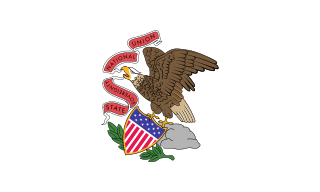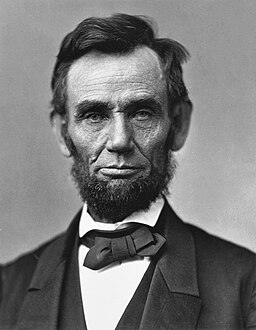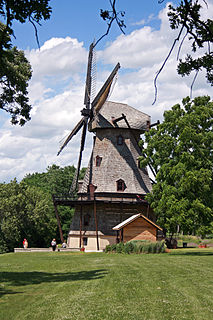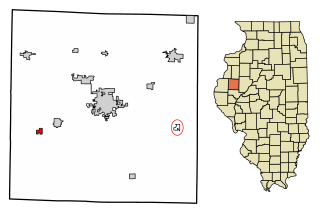The 15th Regiment of the Illinois Volunteer Cavalry was a volunteer cavalry regiment that served in the Union Army during the American Civil War.
The 95th Regiment Illinois Volunteer Infantry was an infantry regiment that served in the Union Army during the American Civil War.

The 99th Regiment Illinois Volunteer Infantry was an infantry regiment that served in the Union Army during the American Civil War.
The 28th Regiment Illinois Volunteer Infantry was an infantry regiment that served in the Union Army during the American Civil War, commanded by Colonel Amory K. Johnson and later by Lieutenant Colonel Richard Ritter.
The 17th Regiment Illinois Volunteer Infantry was an infantry regiment that served in the Union Army during the American Civil War.
The 19th Regiment Illinois Volunteer Infantry was an infantry regiment that served in the Union Army during the American Civil War. Three companies formerly with Col. Elmer Ellsworth's Zouave Cadets wore a zouave uniform consisting of a dark blue zouave jacket with red trimmings, red pants, leather gaiters, a sky blue shirt, red sash, and a red French styled kepi with a dark blue band. The jacket cuffs were trimmed in yellow-orange and red. Brass buttons went down both fronts of the jacket. They were organized into four separate companies on May 4, 1861, in Chicago. It was consolidated and mustered into Federal service as the 19th Illinois Volunteer Infantry on June 17, 1861. It was mustered out at Chicago on July 9, 1864.
The 40th Regiment Illinois Volunteer Infantry was an infantry regiment that served in the Union Army during the American Civil War.
The 47th Regiment Illinois Volunteer Infantry was an infantry regiment that served in the Union Army during the American Civil War.

The 1st Kansas Volunteer Infantry Regiment was an infantry regiment that served in the Union Army during the American Civil War. On August 10, 1861, at the Battle of Wilson's Creek, Missouri, the regiment suffered 106 soldiers killed in action or mortally wounded, one of the highest numbers of fatalities suffered by any Union infantry regiment in a single engagement during the American Civil War.
The 20th Ohio Volunteer Infantry was an infantry regiment in the Union Army during the American Civil War.
The 12th Regiment Indiana Infantry was an infantry regiment in the Union Army during the American Civil War.
The 108th Illinois Volunteer Infantry was an infantry regiment in the Union Army during the American Civil War.
The 113th Illinois Volunteer Infantry was an infantry regiment in the Union Army during the American Civil War.
The 116th Illinois Volunteer Infantry was an infantry regiment in the Union Army during the American Civil War.
The 7th Missouri Volunteer Infantry, commonly known as the "Irish Seventh", was an infantry regiment that served in the Union Army during the American Civil War. In 1864 a battalion of veteran volunteers of the "Irish Seventh was consolidated with a sister Irish regiment, the 30th Missouri Volunteer Infantry and operated as a "demi-brigade" known popularly as the "Missouri Irish Brigade"

The 9th Arkansas Infantry was a Confederate Army infantry regiment during the American Civil War. It served throughout the war in the western theater, seeing action in the Vicksburg, Tennessee and Georgia campaigns. Following its depletion in numbers the regiment was consolidated several times with other Arkansas regiments, finally merging in 1865 into the 1st Arkansas Consolidated Mounted Rifles.
The 11th Regiment Illinois Volunteer Infantry was an infantry regiment that served in the Union Army during the American Civil War. It was originally formed as a three-month volunteer unit at the beginning of the war, and then reorganized as a three-year unit, in which role it served until the end of the war.
The 106th Illinois was created during the call for 300,000 volunteers during the summer and fall of 1862. It was raised to be entirely composed of men from Logan County, Illinois, but Company A was raised in Sangamon County and Company K from Menard. The men were organized and trained in Lincoln, Illinois, and mustered into Federal service on September 18, 1862.
The 117th Illinois Volunteer Infantry was an infantry regiment in the Union Army during the American Civil War.
The 119th Illinois Volunteer Infantry was an infantry regiment in the Union Army during the American Civil War.
(From pages 1 – 5 of "History of the 124th Regiment Illinois Infantry Volunteers, Otherwise Known as the "Hundred and Two Dozen," from August 1862 to August 1865," by R L Howard, Chaplain. Springfield, Illinois; printed and bound by H W Rokker. 1880.)



















